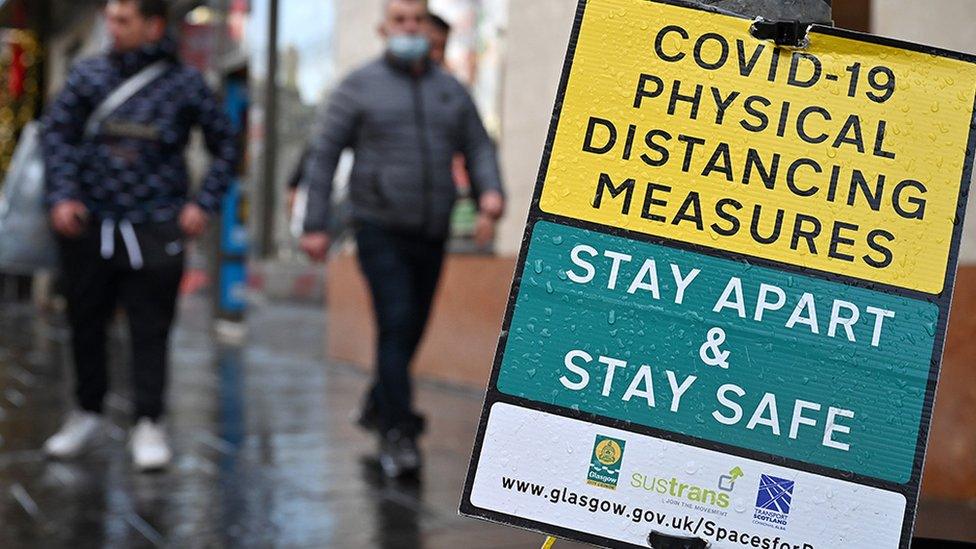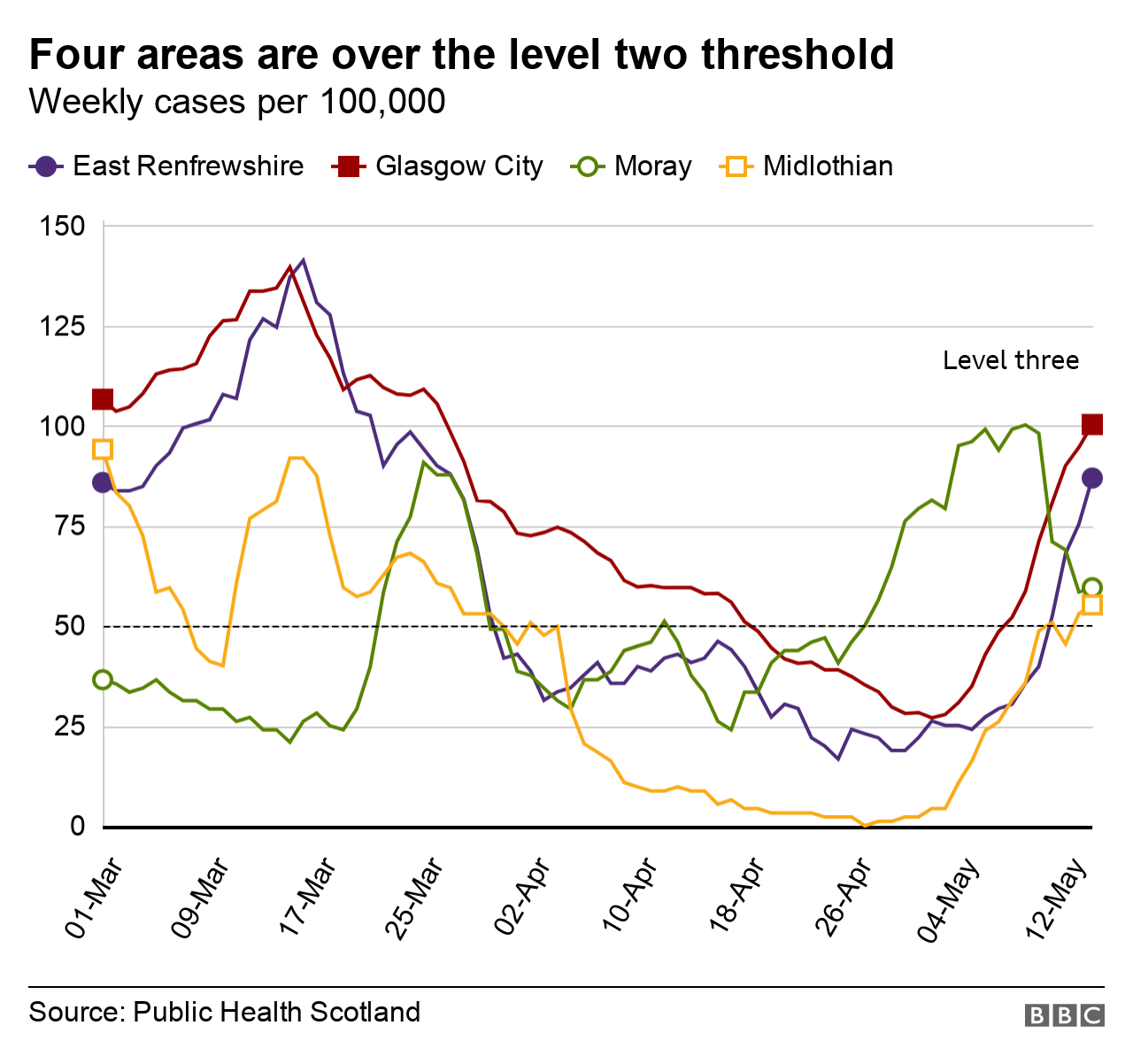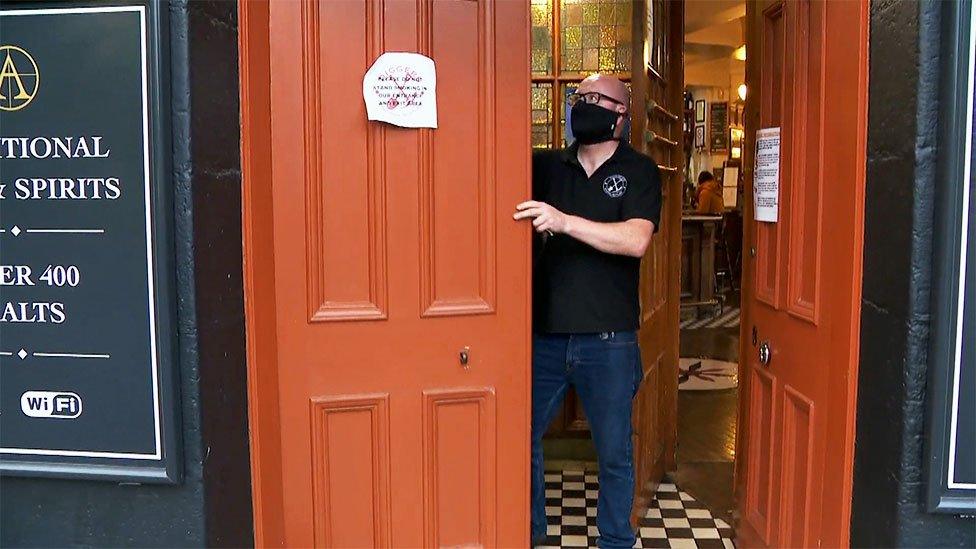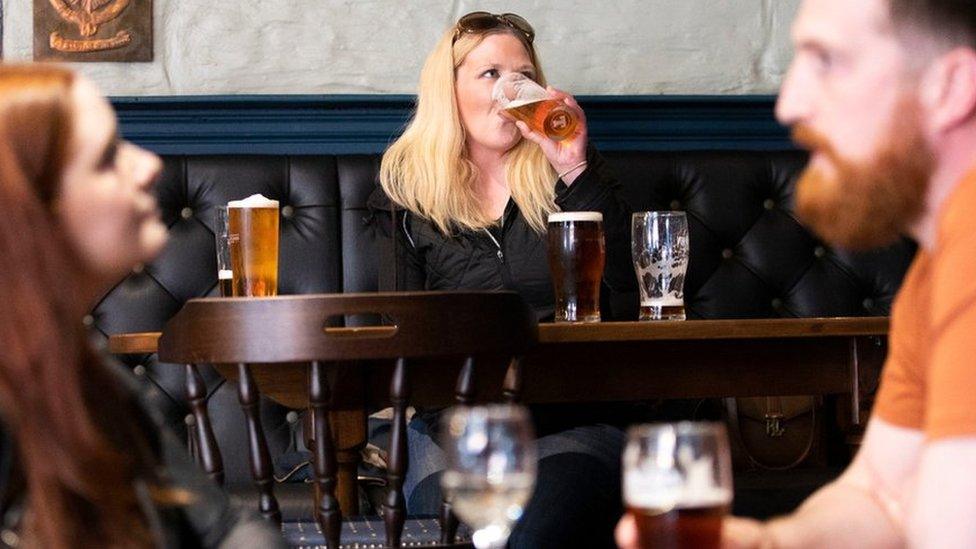Covid in Scotland: Glasgow case rate continues to rise
- Published

Glasgow has remained in level three as much of the rest of Scotland moves to level two
The number of Covid infections is continuing to rise in Glasgow, with weekly case rates now higher than 100 per 100,000 people.
Latest Public Health Scotland figures for 14 May show the city rate is 100.3, with indications it may rise further.
The area remains in level three, while much of the rest of Scotland moves to level two or level one.
The rate in neighbouring East Renfrewshire is 86.9, well above the level two threshold.
However, that council area, which is to the south of the city, has been moved down to level two restrictions, where indoor visits are now allowed.
The outbreak is focused in the south of the city, with Pollokshields recording the highest rates.
Scottish Labour leader Anas Sarwar, who stood for election in Glasgow Southside, confirmed on Monday that he was self-isolating after a family member tested positive for Covid.
A party spokesman said he had tested negative and remained well.
Lockdown measures
About 16 people in every 1,000 tested positive in Pollokshields West, external in the week up to 14 May and the rate was 13 per 1,000 in Pollokshields East.
The number of weekly cases per 100,000 people is a key indicator for the Scottish government, external when judging what level of restrictions an area should be under.
Other measures include the percentage of positive tests, or positivity rate; predicted pressure on local NHS services; and consideration of other harms that could be caused by lockdown measures.
There are now four council areas in Scotland with case rates higher than the level two threshold of 50.
Two of them - Glasgow and Moray - have been held at level three restrictions. Moray's rate for the 14 May was 55.2, but that now appears to be falling.
Midlothian has a rate of 55.2, with indications it is rising.

Scotland's national clinical director, Prof Jason Leitch, told BBC Scotland other areas would continue to be monitored. He said people were being asked to get tested and vaccinations were being rolled out as fast as possible.
"I'm hopeful that we won't have to go backwards but I can't guarantee it," he said.
"It can't be as simple as case rates. Everything builds from there, from hospitalisations, intensive care admissions and death, tragically.
"But you've also got to think about things like vaccine coverage, the economy and social harm. Today we are allowing people into each other's houses - that's a fantastic step but not so good for the public health advisers. You have to balance all that."
Prof Leitch said not enough was yet known about the impact of the Indian variant, but added that in the north of England it had not led to an increase in hospital admissions and numbers of people in intensive care.
He urged anyone in an area with increasing cases to get tested and said people should be doing home tests twice a week as an "extra layer of protection".
He added that people should remain cautious but should not panic.
Second doses
Prof Leitch had warned on Sunday that Glasgow may have to remain in level three for longer than the extra week.
But he told BBC Scotland that the city was doing an "enormous amount of work" to get on top of the outbreak, including accelerating the vaccination programme.
NHS Greater Glasgow and Clyde (NHSGGC) said it was making vaccination appointments available to people aged 18-39 who lived in the worst affected areas of Glasgow.
The health board also said it was "finalising plans" to bring forward second doses for those people aged 50 and over.
In a statement, NHSGGC added: "We would strongly encourage members of the public, particularly those living in the most affected areas of Glasgow, to visit their local asymptomatic testing centre and take a Covid-19 test.
"This will determine whether members of the public have the virus even if they do not have any symptoms."


It is an uncertain time for government trying to balance the easing of restrictions with avoiding another wave of cases.
For now the biggest concern will be how the new Indian variant will play out. It looks to be more infectious and while early evidence suggests it will not make more people sick or evade the vaccine, it is too early to say for sure.
The vaccine won't work for everyone, and there are still plenty of people who need to get their first dose. That's why the race is on to vaccinate all adults in hotspots and to use surge testing to root out cases - with support in place for those who are asked to isolate.
In other parts of Scotland cases are also on the rise. That was inevitable as more and more people come together.
But case rates are only one of a range of factors the government will use to determine what local action is taken. They will take into account things like projections on hospital demand, the proportion of unlinked cases in an area, vaccine uptake, even population density.
It's a complex picture and tricky decisions will need to be taken but it doesn't necessarily mean a uniform approach as the weeks go on.

There were a further 161 new cases of Covid-19 reported across all of Scotland on Monday, with 1.6% of tests positive.
No Covid deaths within 28 days of a positive test were registered and 68 Covid patients were in hospital.
Public Health Scotland figures show that South Lanarkshire was approaching the level two threshold with a weekly case rate of 47.1 on 14 May.
East Dunbartonshire is also close with 46 cases per 100,000.


Related topics
- Published17 May 2021

- Published17 May 2021
